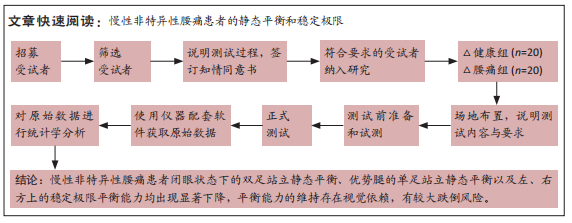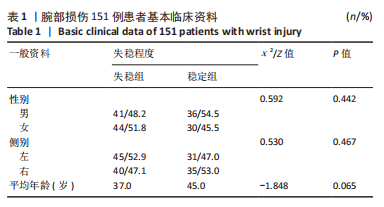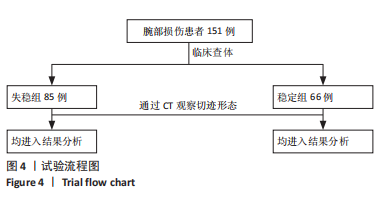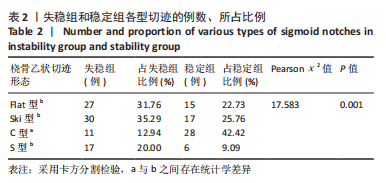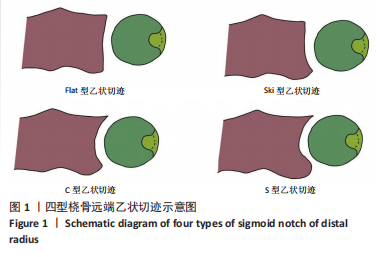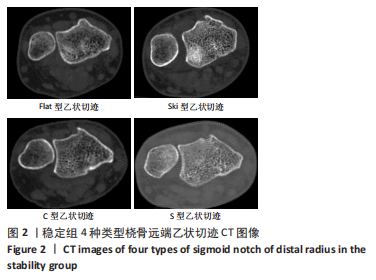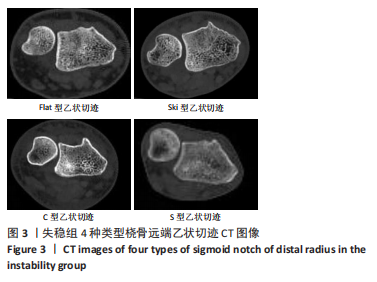[1] ROSS PR, CHUNG KC. Instability in the Setting of Distal Radius Fractures: Diagnosis, Evaluation, and Treatment. Hand Clin. 2020;36(4):417-427.
[2] PICKERING GT, FINE NF, KNAPPER TD, et al. The reliability of clinical assessment of distal radioulnar joint instability. J Hand Surg Eur Vol. 2022;47(4):375-378.
[3] SCHACHINGER F, WIENER S, CARVALHO MF, et al. Evaluation of radiological instability signs in the distal radioulnar joint in children and adolescents with arthroscopically-verified TFCC tears. Arch Orthop Trauma Surg. 2020;140(7):993-999.
[4] TOLAT AR, STANLEY JK, TRAIL IA. A cadaveric study of the anatomy and stability of the distal radioulnar joint in the coronal and transverse planes. J Hand Surg Br. 1996;21(5):587-594.
[5] ORBAY J, VERNON L, POIRIER S, et al. Effect of Ulnar Head Offset on Distal Radioulnar Joint Stability. J Hand Surg Am. 2021;46(9):816.e1-816.e7.
[6] POPPLER LH, MORAN SL. Acute Distal Radioulnar Joint Instability: Evaluation and Treatment. Hand Clin. 2020;36(4):429-441.
[7] WEGMANN K, KNOWLES N, LALONE E, et al. Computed Tomography Analysis of the Radial Notch of the Ulna. J Hand Surg Am. 2019;44(9): 794.e1-794.e8.
[8] KAMAL RN, LEVERSEDGE F, RUCH DS, et al. The Sigmoid Notch View for Distal Radius Fractures. J Hand Surg Am. 2018;43(11):1038.e1-1038.e5.
[9] AF EKENSTAM F, HAGERT CG. Anatomical studies on the geometry and stability of the distal radio ulnar joint. Scand J Plast Reconstr Surg. 1985;19(1):17-25.
[10] SPIES CK, LANGER M, MÜLLER LP, et al. Anatomy and biomechanics of the distal radioulnar joint. Orthopade. 2018;47(8):621-627.
[11] HEITNER HD, WERNER FW, CAVALLARO SM, et al. Biomechanical Evaluation of Distal Radioulnar Joint Instability and Adams Procedure. J Hand Surg Am. 2020;45(10):909-917.
[12] JUNG HS, PARK MJ, WON YS, et al. The correlation between shape of the sigmoid notch of the distal radius and the risk of triangular fibrocartilage complex foveal tear. Bone Joint J. 2020;102-B(6):749-754.
[13] FUJITANI R, OMOKAWA S, AKAHANE M, et al. Predictors of distal radioulnar joint instability in distal radius fractures. J Hand Surg Am. 2011;36(12):1919-1925.
[14] CARR LW, ADAMS B. Chronic Distal Radioulnar Joint Instability. Hand Clin. 2020;36(4):443-453.
[15] TAN DMK, LIM JX. Treatment of Carpal Instability and Distal Radioulnar Joint Instability. Clin Plast Surg. 2019;46(3):451-468.
[16] STUART PR, BERGER RA, LINSCHEID RL, et al. The dorsopalmar stability of the distal radioulnar joint. J Hand Surg Am. 2000;25(4):689-699.
[17] RODRÍGUEZ-MERCHÁN EC, SHOJAIE B, KACHOOEI AR. Distal Radioulnar Joint Instability: Diagnosis and Treatment. Arch Bone Jt Surg. 2022; 10(1):3-16.
[18] NYPAVER C, BOZENTKA DJ. Distal Radius Fracture and the Distal Radioulnar Joint. Hand Clin. 2021;37(2):293-307.
[19] BAEK GH, CHUNG MS, LEE YH, et al. Ulnar shortening osteotomy in idiopathic ulnar impaction syndrome. J Bone Joint Surg Am. 2005; 87(12):2649-2654.
[20] QAZI S, GRAHAM D, REGAL S, et al. Distal Radioulnar Joint Instability and Associated Injuries: A Literature Review. J Hand Microsurg. 2021; 13(3):123-131.
[21] 曾胜强,徐平,杨琴,等.关节镜下重建下尺桡关节稳定性的疗效观察[J].中国骨与关节损伤杂志,2016,31(6):79-80.
[22] LEE Y, AHN JM, GONG HS. Clinical relationship between distal interosseous membrane thickness measured through magnetic resonance imaging and distal radioulnar joint stability: A retrospective study. J Plast Reconstr Aesthet Surg. 2022;75(1):340-347.
[23] ORBAY JL, MIJARES MR, BERRIZ CG. The transverse force experienced by the radial head during axial loading of the forearm: A cadaveric study. Clin Biomech (Bristol, Avon). 2016;31:117-122.
[24] TSUKUDA Y, KAWAMURA D, MATSUI Y, et al. Morphological characteristics of the sigmoid notch of the distal radius affect the stress distribution patterns in the distal radioulnar joint. J Hand Surg Eur Vol. 2019;44(5):496-502.
[25] KIM BS, JUNG KJ, NHO JH, et al. Morphologic Characteristics of the Sigmoid Notch of the Distal Radius for Patients With Peripheral Triangular Fibrocartilage Complex Tear. Orthopedics. 2021;44(6): e729-e734.
[26] YUINE H, YOSHII Y, IWAI K, et al. Assessment of distal radioulnar joint stability in healthy subjects: Changes with dominant hand, sex, and age. J Orthop Res. 2021;39(9):2028-2035.
[27] SWARTMAN B, BENNER L, FRANKE J, et al. Distal radioulnar joint instability with three different injury patterns assessed by three-dimensional C-arm scans: a cadaveric study. J Hand Surg Eur Vol. 2019; 44(10):1072-1078.
[28] WALCH A, GARCIA-MAYA B, KNOWLES NK, et al. Computed tomography analysis of the relationship between the coronoid and the radial head. J Shoulder Elbow Surg. 2021;30(12):2824-2831.
[29] RUBIO F. Distal Radioulnar Joint, Distal Ulna Injury, and Lunate Facet Considerations in Distal Radius Fractures. J Orthop Trauma. 2021; 35(Suppl 3):s11-s16.
|
